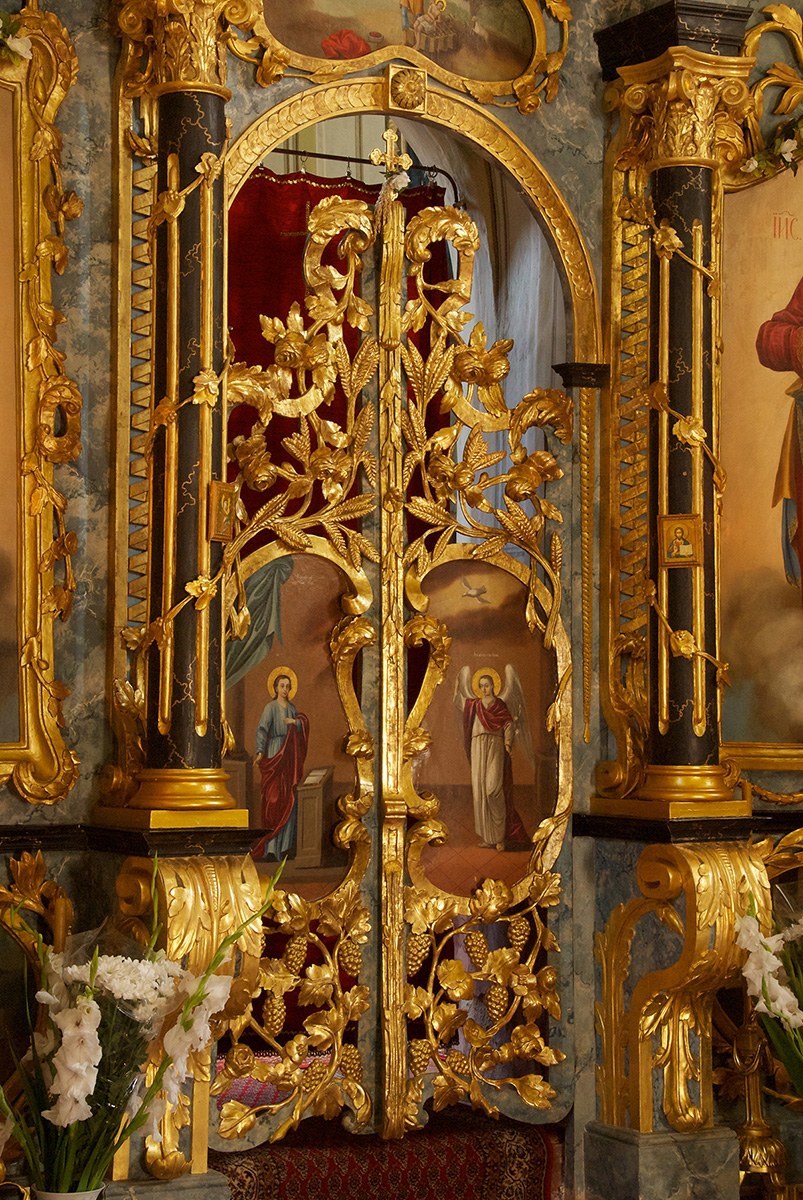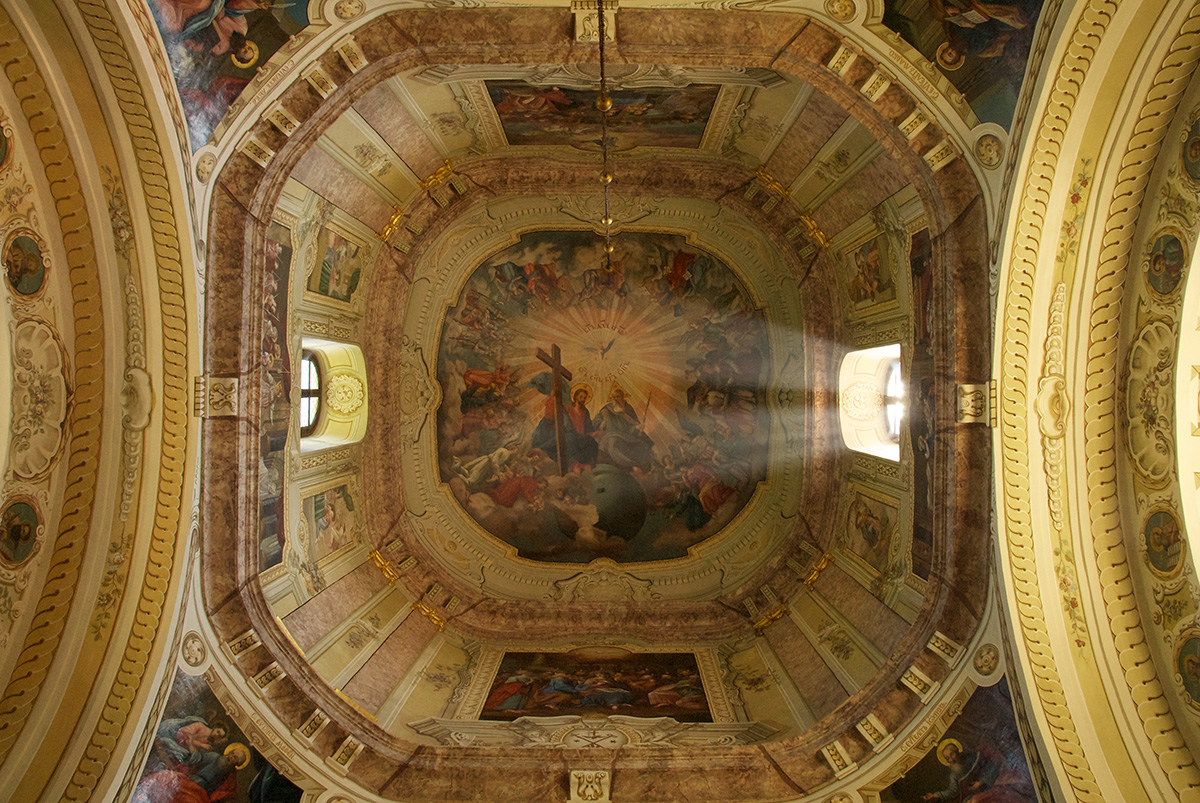The Monastery of Grábóc

The Monastery of Grábóc is situated in Tolna County, in South-Western Hungary. The monastery was built in 1587 by monks of the Dalmatian Monastery of Dragović fleeing hunger and privation. Pajsej was appointed as its first prior. Arriving at the area of the Monastery of Grábóc from Dalmatia with his three fellow religious in 1585, he chanced upon the ruins of an old church with remnants of murals showing Christian figures still visible. As the monks did not have the means to rebuild this apparently large church, they constructed a smaller church nearby, dedicated to the Archangels Michael and Gabriel. Led by Hegumen Stefan, another group of monks arrived at the Monastery of Grábóc in 1619, bringing several liturgical objects and part of the monasterial library with them.
The Monastery of Grábóc would over time grow into the most significant spiritual centre for the Orthodox Serbian population of Baranja/Baranya and the broader Danube Region. Numbering as many as 60 monks as of the mid-17th century, the monastery’s fraternity would yield the hierarchs Simeon and Viktor, who headed the Eparchy of Buda during the Ottoman period. The Monastery of Grábóc maintained close spiritual ties with numerous Serbian monasteries of the Balkans, and its monks would frequently go on pilgrimages to the Holy Land, as illustrated by the monk Simeon’s journey in the middle of the 17th century, when he brought the earthly remains of Saint Barbara from Jerusalem to the Monastery of Grábóc.
The 17th century saw an increase in the size of the monastery estates; orchards and vineyards were planted on land gained by means of forest clearing. However, with its growing respect and prosperity, the monastery would become the target of robbers after a while. Thus, in 1667, the monastery was completely ransacked for the first time, and a few monks, including the prior, were murdered. The monastery was plagued by a similar disaster in 1684 as well, when the Turks pulled their troops from Vienna and Buda. The fate of the nearly devastated monastery turned to critical particularly at the time of the Great Exodus of the Serbs, when the new Austrian authorities exerted pressure on the Monastery of Grábóc to join the ‘Union of Pécs’, announced by the Catholic Church at the end of January 1690. However, the arrival of Patriarch Arsenije Čarnojević at the monastery in 1695 and his three-month long stay in Grábóc conclusively eliminated the threat of entering into union. The reorganisation of the monastery’s fraternity began, but the monastery was destroyed again as early as 1703, during the uprising led by Francis II Rákóczi. The torched monastery stood deserted as late as until 1711, when a few monks returned to Grábóc.



After the hard times of suffering, the monastery regained its strength and started to prosper in the 18th century. At first, the monks of the monastery intended to rebuild the old church of ‘stone and mud’. However, thanks to the commitment of Vasilije Dimitrijević, Bishop of Buda, the building of a new church of monumental proportions commenced within a short period of time. The construction work began in 1736 and was already completed in 1741; the two-storey steeple was added to the west façade in the course of the year 1761, in the time of Sofronije Kirilović, subsequently Bishop of Buda. The Monastery of Grábóc is a single-nave building, with a semicircular apse on its east side and rectangular cantors’ stalls, with a wide and tall, four-sided dome rising over them in the centre of the sanctuary. The iconostasis and other furniture of the new church has been ordered from Johann Laobrohm, a carpenter and woodcarver from Osijek (Eszék), in 1738. No reliable data has survived on the painter of the iconostasis that stood in the church of Grábóc as late as until 1787, when the church was fitted with a new icon screen thanks to the intercession of Sofronije Kirilović, who was Bishop of Timişoara (Temesvár) at the time. The woodcarving of this iconostasis was completed by Arsenije Marković, a master from Novi Sad, while the icons were painted by Vasa Ostojić at his workshop also based in Novi Sad. At the time of the painting of the iconostasis of Grábóc, Ostojić was advanced in years, so he passed some painting assignments to his colleagues, including his son, Petar Ostojić. It was not long before the iconostasis was erected that the painting of the church began as well, also as a result of Sofronije Kirilović’s determination and under his supervision. The murals were painted by Novi Sad painter Andreas Schaltist, who completed the work in Grábóc in 1785. The painting of wall surfaces and the construction of a grandiose iconostasis made the Monastery of Grábóc the finest and most impressive example of Serbian baroque painting in terms of artistic quality and the stylistic arrangements used.

